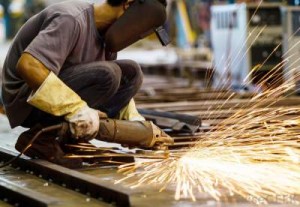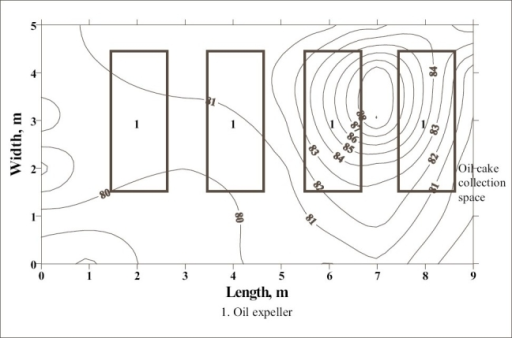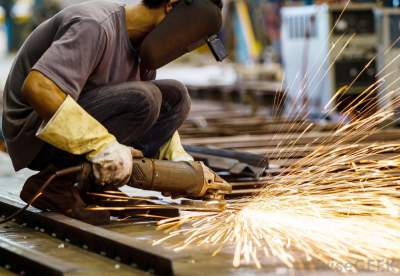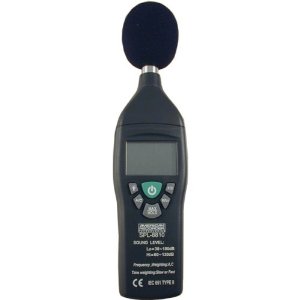How to Measure Noise in Workplace
We will see how to measure noise in workplace by using noise level meter to know whether employees are exposed to high noise levels and if any equipments are generating harmful noise levels.
What is Noise?
Noise is a Sound, especially one that is loud or unpleasant or that causes disturbance.
Why measure noise in Workplace?
Noise level measurement plays important role in workplace hearing conversion. It helps to identify high noise zones in workplace and employees who may get affected. Required action be taken based on observations from noise measurement.
How to Find Noise problems at the Workplace?
To identify noise level problem in workplace readings can be taken from noise level meter at different locations or sites in company premises.

At initial stage a simple walk may guide and gives idea about noise issues in premises.
Below are the possible indicators of high noise areas:
- Noise is louder that city traffic
- Employees have to speak loudly with each other within distance of 3 feet
- After working for years employees developed hearing loss
- After end of the day people have developed temporary hearing loss as they have to increase volume of radios or TVs
- They hear temporary ringing or humming in their ears when leave work
How to Plan Noise level Measurement?
Before reading “How to Measure noise level in workplace” making plan for noise level measurement is important to know what type of information is required.
- Purpose of Noise measurement: Noise rules, Hearing loss anticipation, noise control etc.
- To know about source of high noises
- The existence pattern of noise: continuous, variable, irregular, impulse etc.
- Exposed persons
Noise dosimetry is recommended when noise levels vary throughout the day or employees are fairly mobile in premises.
Read More about Noise Level Testing & Monitoring
What is Sound level Meter (SLM)?
Sound level meter SLM consist of a microphone, electric circuit and digital display. Microphone detects and reads minimal air pressure changes and convert them into electric signals. These signals are processed by electric circuits and converted into decibels. SLM can read noise level for one location at a time.
While measuring noise levels it is held in an arm’s length at the ear height. It does not matter whether microphone is pointe towards source. Sound level monitor must be calibrated before and after use.
Every sound level meter has two modes and those are SLOW and FAST. It is the response rate which SLM averages before showing on screen. For workplace noise level monitoring it should be taken as SLOW.
Type 2 noise level meters are adequately accurate. Type 1 are expensive, Highly Accurate and used in laboratories, engineering etc. Any Noise level meter less accurate than type 2 should not be used for workplace Sound measurement.
When Windshield should be used?
When air blows by microphone, readings are altered. To avoid effect of wind, it recommended to cover microphone by windshield. Its cover is made up of sponge.
What is Noise Survey & How to Conduct It?
A noise level survey is the process of noise measurements throughout the plant or premises of the organization. It may provide useful information like:
- Areas where employees exposed to high noise levels
- Machines or instruments which generates high level of noise
- Employees exposed toharmful noise levels
- Noise control options to reduce exposure to noise
Now we will see how to conduct a noise Survey:
How to measure noise in Workplace?
Noise level survey is conducted in areas where hazardous noise levels are present. It is the process of Noise level measurement at selected locations in entire organization premises. Measurement of noise level is carried out by noise level meter.
In this process a rough diagram of factory plant is drawn on a paper showing locations of sources and employees. Sound measurements are taken for number of suitable locations and marked on the sketch. The higher the number of measurements taken, the more accurate survey is.
A noise map can be produced drawing lines between points of equal sound levels.
It provides very useful information as shown in below image:

When Purpose of Noise level survey is for hearing loss then microphone should be placed as close as location of ears of employee. Any shield between source and microphone of noise level meter should be avoided. For employee noise level meter needs to be held within 0.5 meters of employee’s shoulder.
Above method works best if noise levels are in category of Continuous noise level. If noise level is type of impulse, intermittent and variable then it becomes difficult to determine average exposure to noise by noise level meter and that is when noise dosimeter comes into picture.
This Article Is written by Perfect Pollucon Services. They are Leading Environmental Consulting company in India offer Environmental monitoring Services.


